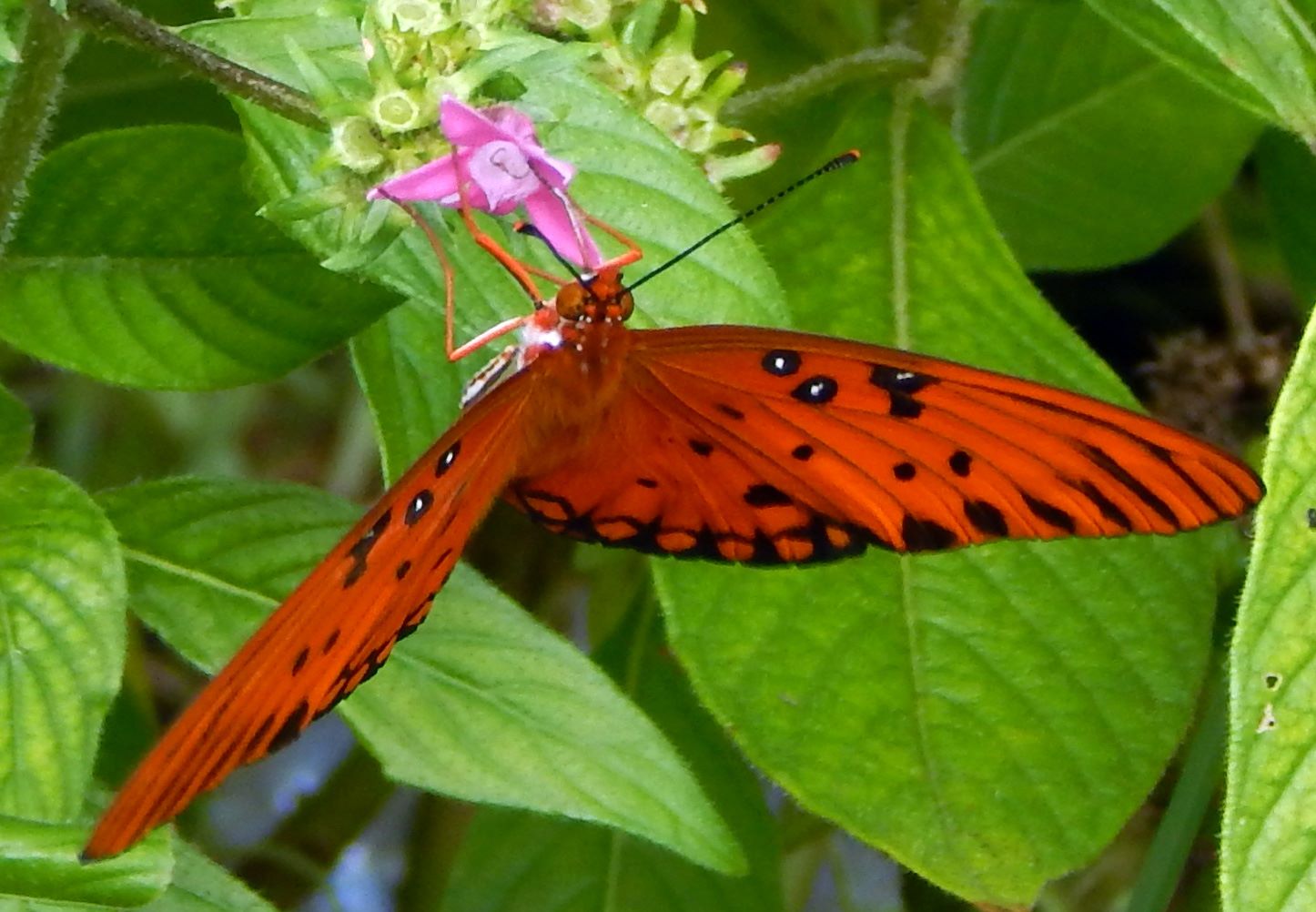
The passion vine butterfly, also known as the Gulf fritillary butterfly (Agraulis vanillae), is a fascinating and captivating creature that has captured the hearts of nature enthusiasts and butterfly lovers worldwide. With its vibrant orange coloration and delicate wing patterns, the passion vine butterfly is a true marvel of nature.
In this article, we will explore 15 captivating facts about the passion vine butterfly. From its life cycle to its unique behaviors and adaptations, we will delve into the intriguing world of these beautiful insects. Whether you are a butterfly enthusiast seeking to expand your knowledge or simply curious about these enchanting creatures, join us as we uncover the secrets of the passion vine butterfly.
Key Takeaways:
- Passion Vine Butterflies are vibrant creatures found in South America, with a short lifespan of 2 to 4 weeks. They rely on passionflower plants for food and protection, and play a crucial role in pollination.
- These butterflies have impressive wing spans, engage in elaborate courtship dances, and exhibit social behavior. However, they face threats from predators and human activities, highlighting the importance of their conservation.
Habitat and Distribution
Passion Vine Butterflies, found primarily in the tropical regions of South America, are known for their vibrant colors and graceful flight.
Lifespan
These beautiful creatures typically have a lifespan of 2 to 4 weeks, with their entire life cycle consisting of four stages: egg, larva, pupa, and adult.
Wing Span
Passion Vine Butterflies have an impressive wing span of approximately 2.5 to 4 inches, showcasing intricate patterns and striking designs.
Diet
These butterflies primarily feed on the nectar of passionflower plants, hence their name. The passionflower serves as their main source of nutrition and also provides protection.
Mating Behavior
Passion Vine Butterflies engage in an elaborate courtship dance, with the male chasing the female in mid-air, showcasing their acrobatic skills to win her over.
Symbiotic Relationship
Their caterpillars have a symbiotic relationship with ants. The ants protect the caterpillars from predators, while the caterpillars secrete a substance that the ants feed on.
Coloration Adaptations
The vivid colors of Passion Vine Butterflies serve as both a warning to predators and as camouflage in their surroundings, helping them blend in with flowers and foliage.
Migration
Some species of Passion Vine Butterflies are known to migrate over long distances, especially during seasonal changes and in search of suitable breeding grounds.
Mimicry Abilities
These butterflies have remarkable mimicry abilities and can imitate the color patterns of other toxic species to deter predators.
Social Behavior
Passion Vine Butterflies tend to exhibit social behavior, often gathering in groups to feed, roost, or migrate together.
Native Influences
Passion Vine Butterflies play a significant role in the pollination of passionflower plants, contributing to the ecosystem’s balance and reproduction.
Predators
Despite their vibrant colors and strategies for protection, Passion Vine Butterflies still face threats from birds, lizards, and other insectivorous animals.
Ecological Importance
As pollinators, Passion Vine Butterflies play a vital role in maintaining plant diversity and ecosystem stability in their native habitats.
Courtship Rituals
Male Passion Vine Butterflies engage in aerial battles to establish dominance and secure a mate during the breeding season.
Human Impact
Human activities, such as habitat destruction and pesticide use, pose a significant threat to the survival of Passion Vine Butterflies and their ecosystem.
Conclusion
In conclusion, passion vine butterflies are fascinating creatures that hold many interesting facts. From their intricate life cycle to their vibrant colors and unique adaptations, these butterflies never fail to captivate our attention. Whether you are a nature enthusiast or simply curious about these beautiful insects, learning about passion vine butterflies illuminates the wonder and diversity of the animal kingdom. So next time you spot a passion vine butterfly fluttering by, take a moment to appreciate its extraordinary journey and the beauty it brings to our world.
FAQs
Q: What do passion vine butterflies eat?
A: Passion vine butterflies primarily feed on the leaves of passion vine plants. The caterpillars feed on the leaves, and the adult butterflies may drink nectar from various flowers.
Q: How long do passion vine butterflies live?
A: The lifespan of passion vine butterflies varies depending on the species. Generally, adults live for a few weeks to a couple of months.
Q: Are passion vine butterflies harmful to plants?
A: While passion vine butterfly caterpillars can eat a significant amount of passion vine leaves, they rarely cause any long-term harm to healthy plants. In fact, these butterflies contribute to pollination as they visit flowers for nectar.
Q: Where can I find passion vine butterflies?
A: Passion vine butterflies can be found in various regions throughout the world, including North, Central, and South America. Look for them near areas with passion vine plants, such as gardens, parks, and natural habitats.
Q: How can I attract passion vine butterflies to my garden?
A: To attract passion vine butterflies, you can plant passion vine plants in your garden. These plants serve as host plants for the caterpillars and provide a source of nectar for the adult butterflies. Providing a suitable habitat with native plants and avoiding the use of pesticides can also help attract these beautiful insects.
Was this page helpful?
Our commitment to delivering trustworthy and engaging content is at the heart of what we do. Each fact on our site is contributed by real users like you, bringing a wealth of diverse insights and information. To ensure the highest standards of accuracy and reliability, our dedicated editors meticulously review each submission. This process guarantees that the facts we share are not only fascinating but also credible. Trust in our commitment to quality and authenticity as you explore and learn with us.
